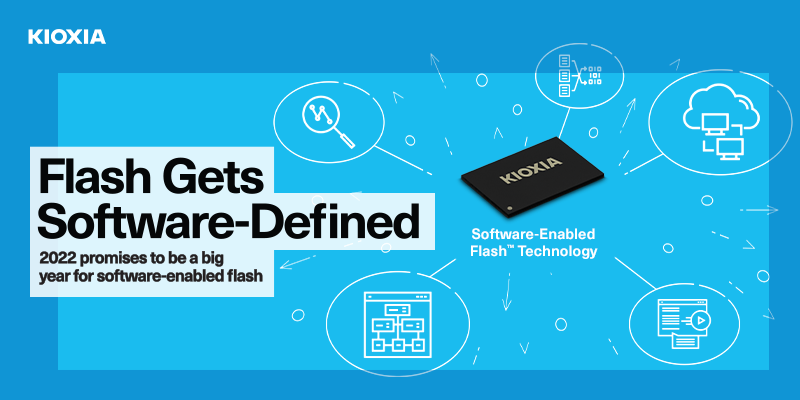
The new year is upon us, and it promises to be a big one for software-enabled flash.
In being asked to provide a few predictions for 2022, I feel very strongly that 2022 will be the year that hyperscale cloud providers and storage developers maximize the value of flash memory. This will be made possible by technology that breaks free from legacy HDD protocols and creates a platform specific to flash media in a hyperscale environment. Keep reading to find out exactly what I mean by that – and the implications this technology will have on hyperscale applications.
- Flash storage technology will finally break free from legacy protocols to unlock the full power of flash.
Flash as a large-scale storage media will become software-defined with capabilities not possible on legacy storage. This already exists for software-defined networking, hardware, and computation. Software-defined is a proven benefit on many platforms, but interestingly flash storage hardware is not yet fully software-defined. In 2022 software-defined flash is expected to enable TCO improvements, faster deployment of newest generations of flash and drive higher utilization and value of flash storage.
-
Hyperscale developers will dramatically expand their total capacity of flash storage
For many years, hyperscale storage developers have wanted to tap into the full capabilities of flash and unlock its unique benefits. In 2022 this will become possible, opening up a new set of possibilities for flash in hyperscale applications.
- Flash storage in the cloud will be managed and reconfigured down the die level to better meet ever-changing cloud server demands
New media-based software defined technology is to be released as an open source project in 2022, bringing high value access to flash with improved time to market and adaptability. Flash hardware will be modifiable through an open source software API. So, in 2022, cloud servers will be able to change the characteristics of their flash storage as application needs change. This will be accomplished by simply modifying the hardware functions via software drivers. This will be possible from any flash vendor who adopts the new open source software-defined for flash technology.
Disclaimer
The views and opinions expressed in this blog are those of the author(s) and do not necessarily reflect those of KIOXIA America, Inc.